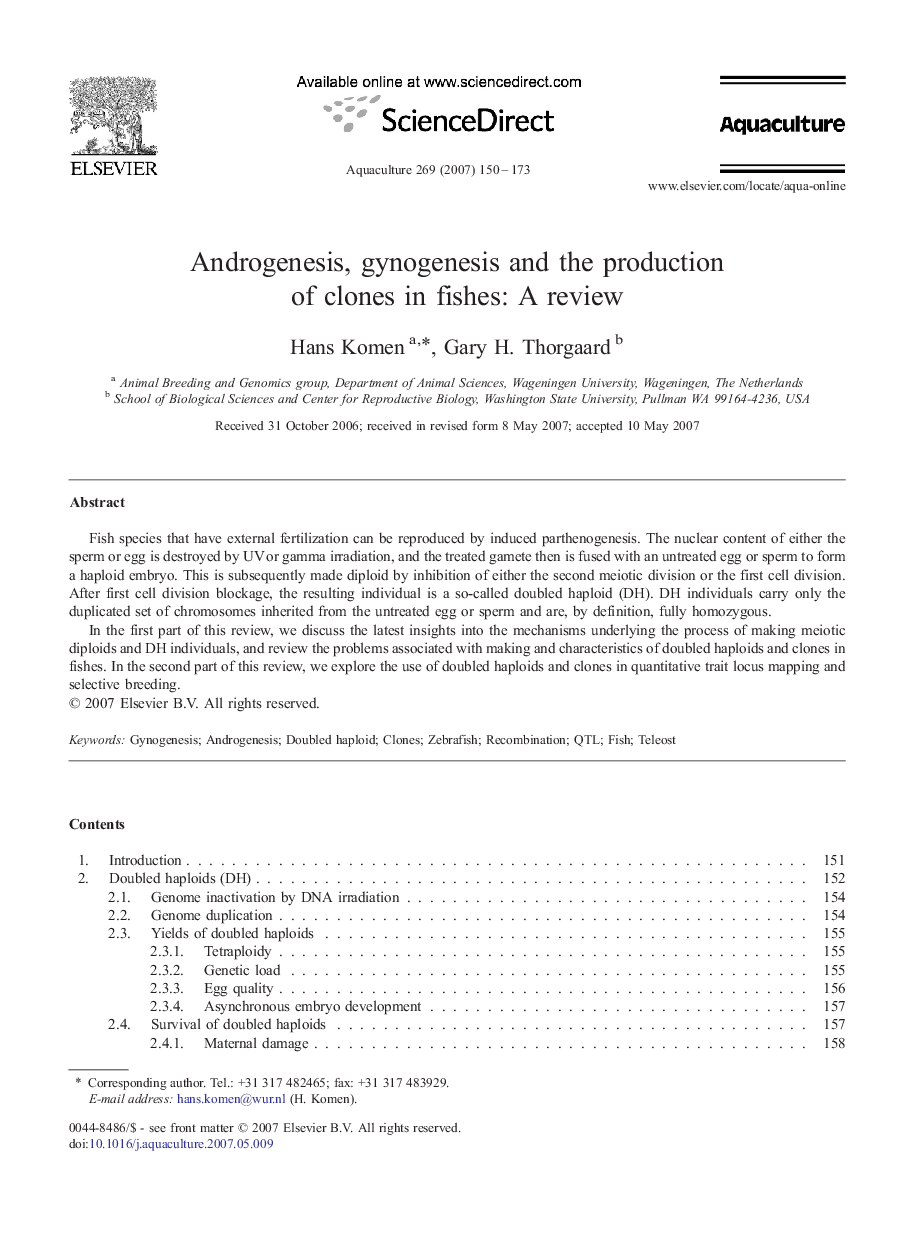| Article ID | Journal | Published Year | Pages | File Type |
|---|---|---|---|---|
| 2425271 | Aquaculture | 2007 | 24 Pages |
Fish species that have external fertilization can be reproduced by induced parthenogenesis. The nuclear content of either the sperm or egg is destroyed by UV or gamma irradiation, and the treated gamete then is fused with an untreated egg or sperm to form a haploid embryo. This is subsequently made diploid by inhibition of either the second meiotic division or the first cell division. After first cell division blockage, the resulting individual is a so-called doubled haploid (DH). DH individuals carry only the duplicated set of chromosomes inherited from the untreated egg or sperm and are, by definition, fully homozygous.In the first part of this review, we discuss the latest insights into the mechanisms underlying the process of making meiotic diploids and DH individuals, and review the problems associated with making and characteristics of doubled haploids and clones in fishes. In the second part of this review, we explore the use of doubled haploids and clones in quantitative trait locus mapping and selective breeding.
